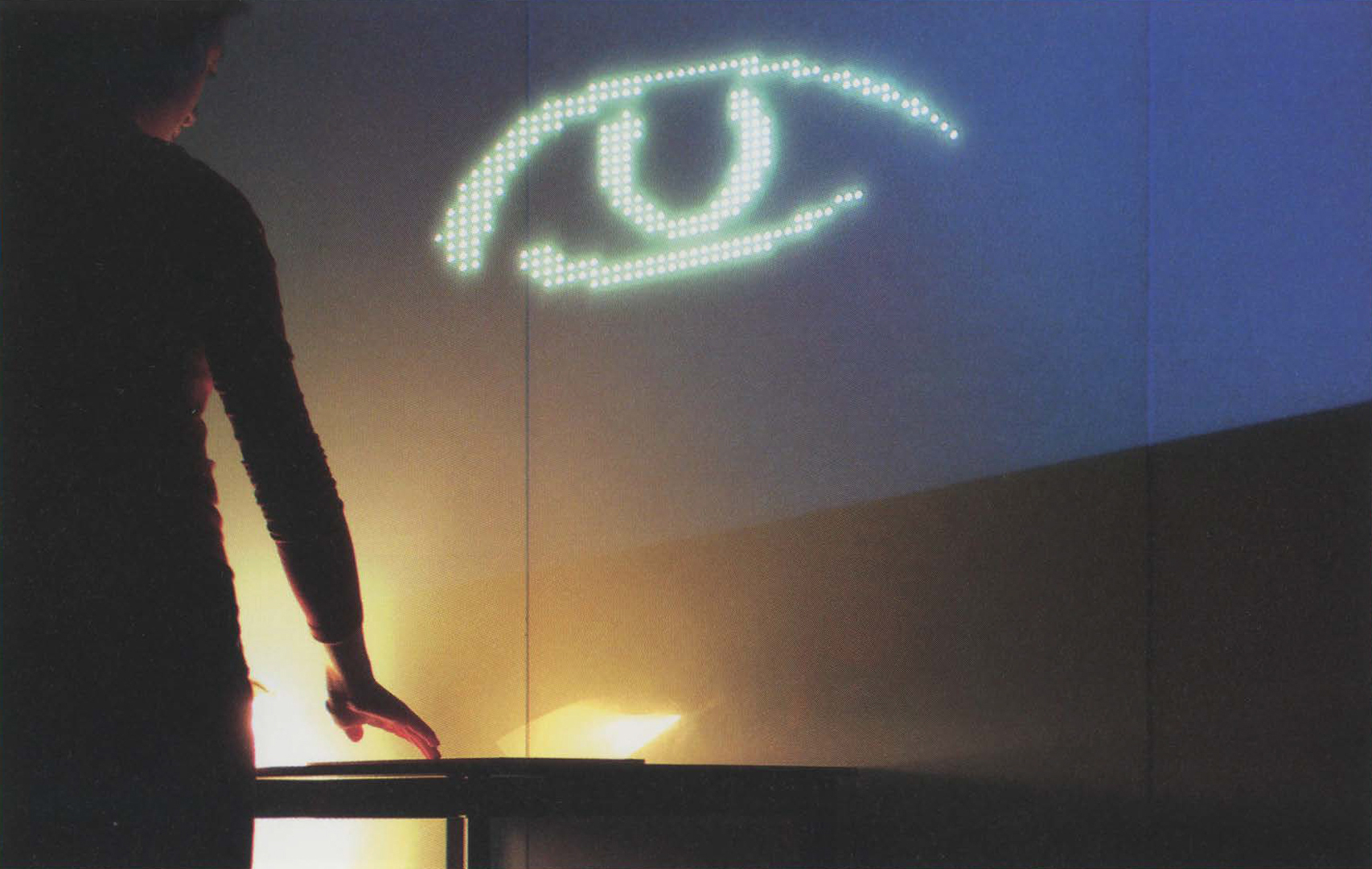Haemin Kim, Junghyun Ahn: Dreaming a Fingertip Conversation with You _ tactuaL [si:gak] series
Artist(s):
Collaborators:
Title:
- Dreaming a Fingertip Conversation with You _ tactuaL [si:gak] series
Exhibition:
Creation Year:
- 2007
Medium:
- Mixed media installation, porcelain plate, unglazed, 1300’C, digital printing, LED display panel
Category:
Artist Statement:
시각 [si:gak]
1. 視覺, the sense of sight; vision
2. 視角, one’s viewpoint, a way of looking
3. 始覺, through experience we escape ignorance and attain awareness (a Buddhist word)
This project was inspired by the challenge of finding the meaning of extending human senses in the area of new media art. By utilizing the interactivity of digital media, it presents a new way to understand how the visually disabled perceive the world. This series is an art experiment that was created at the point where the boundaries that divide art from science and design disappear, due to technological development. We tried to go beyond traditional methods of visual information processing with a technique called physical computing. And we hope that the experiment extends beyond technology to present an aesthetically engaging experience.
Technical Information:
This fundamental technology is a visual-touch communicating device that uses a touch sensor connected to Braille. Each artwork separates each type of visual information, creating a haptic interface. The input signal from the touch sensor senses the static electricity in fingertips and transforms it into LED power-control output signals or sound-output signals. The signals from the serial port also directly affect the elements of constituent change. This series uses the software that implements dynamic graphics on display panels and a hardware-control program called Wiring, located
inside the I/O board.
All Works by the Artist(s) in This Archive:
- Haemin Kim
-
![dot . a scene = sinθ at the sea _ tactuaL [si:gak] series #2](https://history.siggraph.org/wp-content/uploads/2018/08/p20-kim-150x150.jpg)
dot . a scene = sinθ at the sea _ tactu...
[SIGGRAPH Asia 2008] -

Playing With Remine
[SIGGRAPH Asia 2020] -
![Dreaming a Fingertip Conversation with You _ tactuaL [si:gak] series](https://history.siggraph.org/wp-content/uploads/2017/08/2007_KimAhn_DreamingaFingerTipConversationWithYou-150x150.jpg)
Dreaming a Fingertip Conversation with Y...
[SIGGRAPH 2007] - Junghyun Ahn





